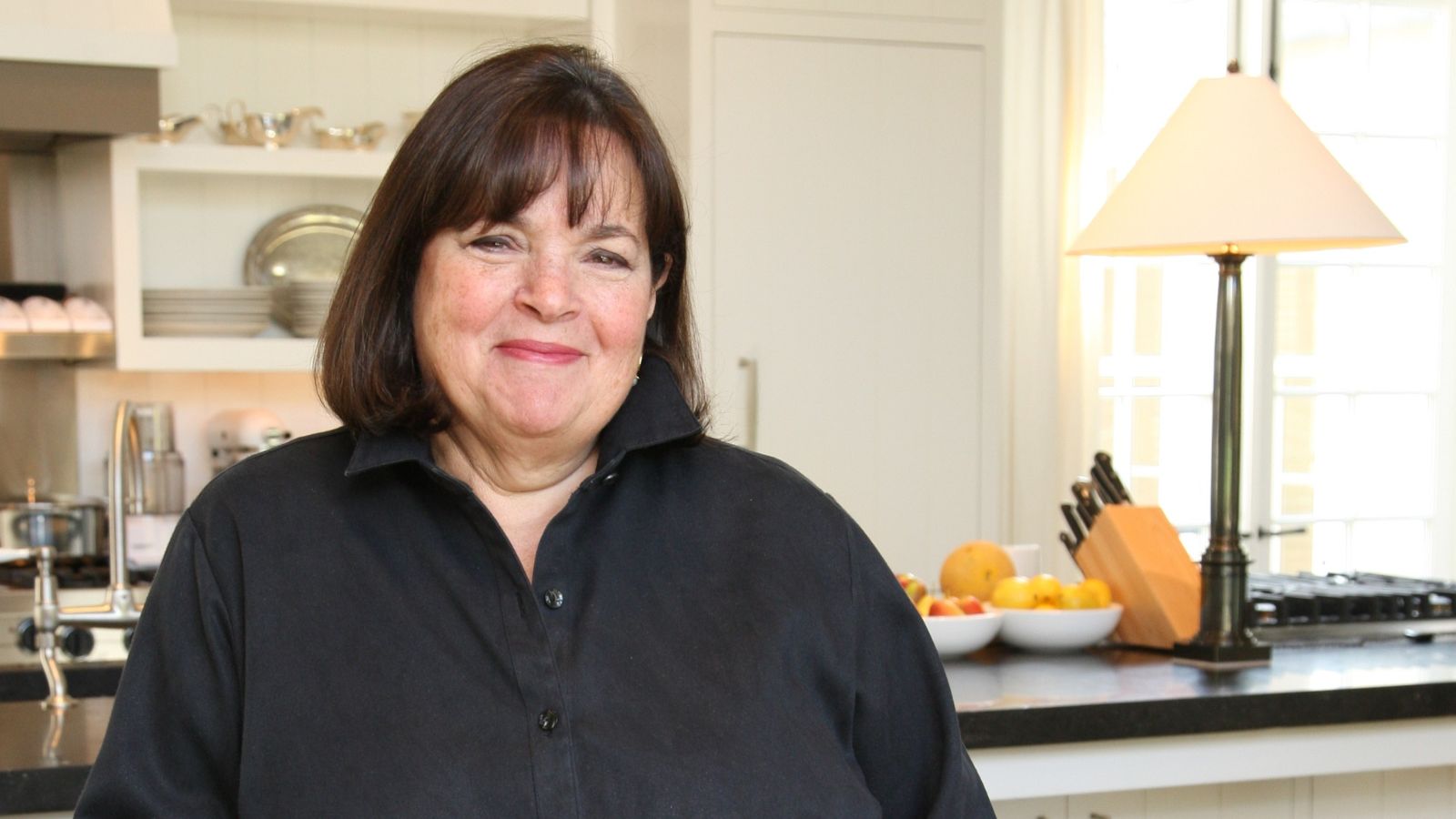
You can overhear a lot of weird things walking through the park, but an excited, sudden exclamation of “What if it was a horde of rats?!” is definitely up there. Yet the reason, in this particular case, wasn’t an ominous one: It was part of the brainstorming process for the opening title sequence for Netflix’s recent (excellent) adaptation of “ The Decameron .” Mark Bashore and Katrina Crawford were the parkgoers in question and the creative directors of Plains of Yonder.
The studio began as a design firm in Seattle and developed an Emmy-nominated knack for crafting opening titles for television series — something they say lots of people assume gets scripted by the writers on a given series, but in actuality, creative studios like theirs get brought in and work with the showrunners to execute. They’ve spent a couple of decades now crafting striking opening titles for shows from “True Blood” to both seasons of “ The White Lotus ” to Taika Waititi’s take on “ Time Bandits .” Whatever the project, the goal for Plains of Yonder is to come up with a set of concepts (they usually pitch four to six different ideas) that can visually introduce a show’s tone or genre, create an energy that mirrors the series’, and get the audience excited to watch what happens next.

But how they do that visually — animation or live-action or some combination — how long the credits run, and whether the sequences ever change? That all varies. Each show is its own puzzle, which is, according to Crawford, why they got interested in the work in the first place. “We like coming at an interesting creative problem and then finding multiple ways into it,” Crawford told IndieWire.
Bashore added that he thinks some of their best work has been the most open-ended projects, where they had to experiment, fail, come at it from a different angle, and discover new things along the way. “A showrunner will say, ‘We don’t know what we want, but we know how we want it to feel,'” Bashore said. “Those are our most successful jobs where you’re given a blank slate and can come back with sometimes four or five hopefully right answers.
” Getting from four or five right answers to the one right answer is the fun (and the work) of crafting main title sequences and takes months of research and immersion in the world that a show is trying to build — which can be a challenge if a show is particularly spoiler-conscious. “We’ve had projects where there’s so much secrecy, it’s like [we only get] a few words; it’s mostly just conversation with the showrunner about their choices and how we can connect to that. But sometimes we get scripts, and occasionally we even get to see pre-cuts of a couple episodes,” Crawford said.
For “ The Decameron ,” fortunately, history spoiled The Black Death, so when Bashore and Crawford spoke to showrunner Kathleen Jordan, they were given the challenge of evoking the raunchy spirit of Boccaccio, emphasizing the gentle medievalist setting and adding in visual nods to the twists and turns of the story. For six months, the team did a deep dive through “everything 1300s,” according to Crawford, picking up not just imagery but also the kind of fonts that echo Carolingian minuscule and handwritten illuminated manuscripts. “There’s things that are more obvious [in the sequence] like music, but then there are little tiny things or seemingly tiny color choices, lighting — we spend a lot of time compositing and coloring our pieces,” Crawford said.
Eventually, that walk in the park led the Plains of Yonder team to a solution that felt like it could do everything the show’s title sequence needed: A combination of both hand-drawn 2D animation and a 3D particle system that would create the rats that form shapes with meaning for the story of “The Decameron” as the credits roll. “We really wanted to have these loveable but nasty rats, and really have you see the faces, but we also loved this idea of a horde. This continuous virulent force that’s always changing and always there and you cannot escape it,” Crawford said.
“The 2D [required] lots and lots of frames, little somersaulting, fun transitions...
but then we took the 3D and gave the rats a hand-inked texture and individual gaits so they move differently and introduced a lot of flaw into our 3D — basically trying to make the 3D as organic as possible.” “It was probably the most satisfying job I’ve ever worked on because the team was so disparate,” Bashore added. “What was really fun was to hear [both our 2D and 3D animation teams] being in awe of the other side.
The 3D guys thought the hand-drawn rats were so cool and the traditional animators who are pads or in some cases real ink on paper were like, ‘The 3D stuff is really cool.’ It’s really, really satisfying to bring these two crafts together, and we knew it was technically challenging to do and took a lot of failure and experimentation to get to the final finish line.” The technical challenge is masked by the simplicity of the final images and also by the sequence’s humor, which has been a staple of Bashore and Crawford’s work and something they see as a positive trend in title work across television shows at the moment.
“We’ve had success creating beautiful titles that also put a smile on your face. They’re not heavy, and it’s not that they’re not metaphorically deep. But they also make you laugh a little bit and maybe because they’re going on shows like ‘The Decameron’ and ‘White Lotus,’ they catch a tone,” Bashore said.
“To us, success is someone watching saying, ‘I feel like this was made just for me.’ The sensibility, and the humor, we feel that connects with people very, very quickly.” Quick connections take a lot of trial and error, and never quite in the same way.
For “The White Lotus” Season 2 credits, Plains of Yonder needed to take audiences on a tour of Italy in advance of the shenanigans Mike White’s series would get up to there. They settled on Renaissance paintings that gradually reveal a level of violence and lust underneath the paintings’ elevated aesthetics, but paintings are essentially static. They also needed to create enough movement to vibe with composer Cristobal Tapia de Veer’s Euro-tastic dance track.
“The early concepts for ‘White Lotus’ Season 1 and 2 [were] things that don’t move. And it really is not built for television or film because it doesn’t move. So when we heard that dance track, we were like, ‘Well, this is going to be a really fast slideshow,” Bashore said.
More than a slideshow, though, the team worked to animate the paintings, add shadow, and did everything they could with the editing to create motion and a sense of intrigue. “[There’s] the logistics and the rational part of how many credits need to be on the screen and how long it needs to be,” Bashore said. “Because when you get up around 90 seconds, you really do have to tell a story.
Even 90 seconds has to have a beginning, middle, and an end.” With both seasons of “The White Lotus,” and with most of their main titles work, music is a key component to structuring that story and conveying the vibe of a series. Bashore told IndieWire that they work with showrunners and composers early and often to get cuts of the main title theme and continue to edit against it right up to the deadline.
“We absolutely consider the ears to be maybe even more sensitive than the eyes in terms of getting to your emotional core,” Bashore said. “We’re constantly readjusting to any new music score right down to the frame, even if it’s the last day of delivery. If the score changes a little bit, we’ll change our picture to fit it.
” Whether it’s a perfect melding of sound and picture or the inclusion of evocative details that hold meaning for a series — Bashore and Crawford are especially proud of getting all 19 rings into the same frame in the Season 2 “The Rings of Power” title sequence before they morph into the White Tree — or unexpected imagery that still captures a vibe, the overarching goal is to come up with a title sequence that feels like it’s rewarding for the show’s viewers. “That’s the overarching goal, right? To really reward people for watching. So it’s fun to hide little things or to give things that add meaning,” Crawford said.
“We’re very fortunate to have worked with a lot of long-term partners, some up to 20 years, where the core belief really is about being curious and experimenting. So everyone, all our colleagues, enjoy that process.” At the end of that process, Bashore said that the Plains of Yonder team works to “make imagery that has not been on TV before.
”.














